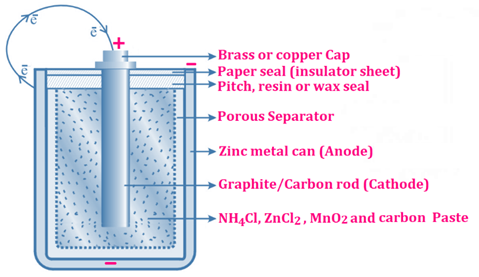Model Test Questions XI Chemistry on Electrochemistry and Oxidation Number (Chapter # 12)
Short
Questions
Q1. Define the terms oxidation, reduction, oxidizing agent, reducing
agent and redox reactions in terms of electron
transfer. Identify the oxidizing agent and reducing agent in following
equation:
Mg + H2SO4
→ MgSO4 + H2
Q2*. Distinguish between the following
(i) Primary and secondary cell,
(ii) Oxidation and
reduction
(iii) Oxidizing and reducing agent.
(iv)
Oxidation number and valency
Q3*. What is meant by oxidation number? State its
rules
Q4*. Determine
the oxidation number of central atom in following
(i) Cr in H2CrO4
(ii) S in K2S4O6
(iii) Fe in Fe3O4
(iv) Cl in HClO4
Q5. Examine
the following chemical equations and Identify the redox reactions out of the
following reactions and indicate the oxidation, reduction, oxidizing and
reducing agent in them.
(i) HNO3 +2HCl →
NOCl + Cl2 + 2H2O
(ii) HgCl2 + 2KI → HgI2 + 2KCl
(iii) Fe2O3
+ 3CO →
2Fe + 3CO2
(iv) PCl3 + 3H2O → 3HCl + H3PO3
(v) H2S + Br2
→ 2HBr +
S
(vii) 4NH3 + 3O2 → 2N2 + 6H2O
(viii) H2 + Cl2 → 2HCl
(vii) Zn +
Cl2 → ZnCl2
(ix) 2Ca + O2 → CaO
(x) 2Li + S →
Li2S
Q6. Identify the oxidizing and reducing agents from the following.
(i) Al (RA)
(ii) Na (RA)
(iii) H2S (RA)
(iv) H2SO4 (OA)
(v) KMnO4 (OA)
(vi) Zn (RA)
Q7. What is the oxidation number of sulphur in following compounds?
H2SO3,
S2O32‒, S2Cl2, SF6,
SO2Cl2
Q8. What is
the oxidation number of chromium in following compounds?
CrO3, CrO2,
Cr2O72¯, CrO21¯, CrO2Cl2
Q9. Determine the oxidation number of
central atom in following
(i) S in Na2S2O3
(ii) Mn in MnO4−
(iii)
Cr in Cr2O72−
(iv) Cl in ClO3
(v) Cr in Cr2(SO4)3
(vi) P in Ca(H2PO4)2
(vii) S in H2SO4
(viii) Ni in Ni(CO)4
(ix)
Fe in Fe3O4
(x) C in C3O4
(xi) Fe(CO)3
(xii) Cr(CO)6
Q10. Calculate the oxidation number of
central element in following:
Q11. Calculate the oxidation number of
central element in following:
(i) C in C2H6O
(ii) C in C4H8O2
(iii) C in CH3Cl
(iv) Cr in CrO2Cl2
(v) C in COCl2
(vi) N in NOCl
(vii) UO2Cl2
(viii) BiOCl
(ix) S in SO2Cl
(x) S in SOCl2
(xi) S in HSO3F
(xii) C in
HCNS
Q12. Calculate the oxidation number of
central element in following:
(i) P in POCl3
(ii) CNO−
(iii) Cl in CaOCl2 (Bleaching powder)
(iv) S in Na2S4O6
(v) N in NH4NO3
(vi)
Br in BrO3−
Q13. Calculate the oxidation number of central element in following:
(1) Cr in K2Cr2O7 and CrO2−
(2) Cl in Mg(ClO4)2 and ClO2−
(3) P in Na4P2O7 and H3PO4
(4) N in NH4Cl and HNO2
(5) N in NH3 and NCl3
(6) Mn in KMnO4 and MnO4−
(7) O in OF2 and H2O2
(8) O in KO2 and O2F2
(9) O in BaO2 and Na2O2
(10) S in Na2S4O6 and S2O32−
(11) S in H2S2O7 and SO2Cl2
(12) Cr in CrO2Cl2 and CrO42−
(13) H in CaH2 and NaH
(14) Mn in Mn2O7 and MnO2
(15) C in C6H12O6 and C12H22O11
(16) C in C2H4O2 and CH2O
(17) Mn in Mn2O3 and MnO42−
Q14. Define the term standard electrode potential
and hydrogen electrode.
Q15. In the process of electroplating the item to be
plated is made cathode, give reason?
Q16. What is corrosion? What causes it to form? What
can be done to prevent its formation?
Q17. How can you define an electrochemical series?
Give its properties.
Q18. What is Electrolysis and
electrochemistry? Name two parts of Redox reactions
that occurs in electrolysis of molten
CaCl2 or sodium chloride and state where each occurs and describe
its electrolysis.
Descriptive
Questions
Q1. What is meant
be electrode potential and hydrogen electrode (SHE). Describe how the electrode
potential of zinc or copper is determined?
Q2. What is
Galvanic cell? Sketch a copper-zinc Galvanic ell, write the cell reaction, cell
diagram and shows the direction of electron flow.
Q3. What is the
difference between a primary cell and secondary cell. Sketch a diagram of dry
cell and explain its working.
Q4. Balance the any 2 of the following equations by ion electron method attempting one in acidic medium and one in basic medium
H2S + HNO3 → S + NO + H2O (acidic medium)
CuS + NO3‒ → CuSO4 + NO (acidic medium)
MnO4‒ + C2O42‒ → Mn2+ + CO2 (acidic medium)
MnO4‒ + Cl‒ → Mn2+ + Cl2 (acidic medium)
MnO4‒ + SO32‒ → Mn2+ + SO42‒ (acidic medium)
Cr2O72‒ + I2 → Cr3+ + IO3‒ + H2O (acidic medium)
Cr2O72‒ + Fe2+ → Cr3+ + Fe3+ + H2O(acidic medium)
Cr2O72‒ + I‒+ H+ → Cr3+ + IO3‒ + H2O (acidic medium)
NO3‒ + Zn → ZnO22‒ + NH3 (basic medium)
Cr(OH)3 + H2O2 → CrO42‒ + OH‒ (basic medium)
Cl2 + OH‒ → Cl‒ + ClO3‒ +H2O (basic medium)



































































